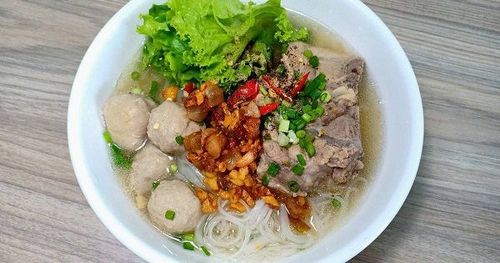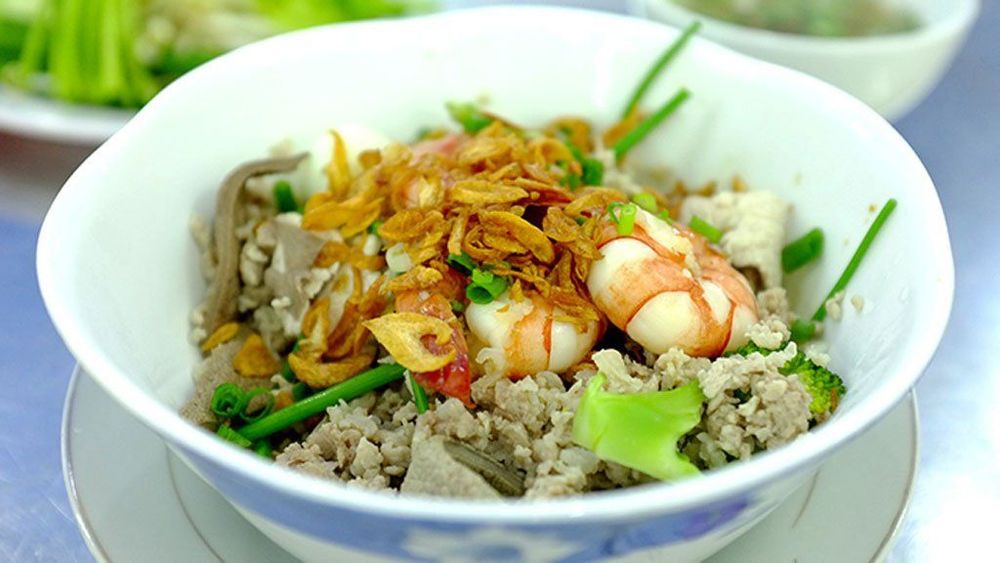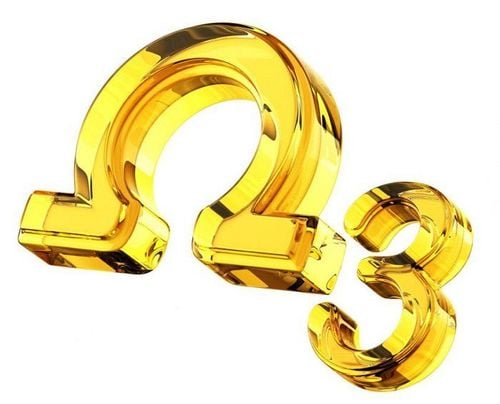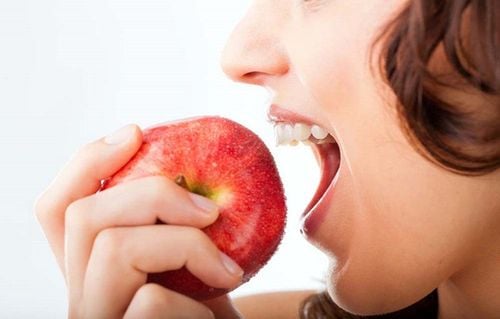The question of how many calories are in a bowl of hu tieu is a concern for many people, especially those who are on a diet to lose weight. This is because it is one of the factors that can determine whether your weight loss process will be successful or not.
1. Nutritional Components in Hu Tieu
Hu tieu, also known as "hu tíu" (as called by people in the South due to the similarity in pronunciation between "tiếu" and "tíu" in Southern Vietnamese dialect), is a dish made from rice-based noodles originating from the Chaozhou and Minnan regions. It shares many similarities with Cantonese "sha ha fen" and Hakka "ban diao," and it was introduced to various regions in and outside of China. It has become a common dish in South China and Southeast Asia, including Southern Vietnam, Cambodia, Laos, Thailand, Singapore, and more.
Hu tieu was introduced and developed rapidly in Southern Vietnam, particularly in Saigon, since the 1950s. It’s easy to find a hu tieu shop on the streets or a mobile hu tieu vendor at the entrance of alleys. It can be said that hu tieu is a characteristic dish of the region, similar to pho in Hanoi in the past. Hu tieu is often consumed as a breakfast or dinner dish, and people in the South rarely eat it for lunch.
The main ingredient of hu tieu is the noodles, and the broth is typically made with minced pork and pig's organs. The noodles are briefly blanched with the broth, and then additional ingredients such as bean sprouts, chives, and minced meat are added. It can be enjoyed with beef balls, chili sauce, or soy sauce.
In Vietnam, hu tieu comes in many varieties, including:
- Hu Tieu Nam Vang: Exists in two main forms, dry hu tieu and soup hu tieu.
- Hu Tieu Sa Te: Originates from the Teochew Chinese community.
- Hu Tieu My Tho: Includes shrimp, squid, seafood, and snails, a specialty from My Tho.
- Hu Tieu Trung Hoa: Has a soy sauce flavor.
- Hu Tieu Sa Dec: Made from fresh Sa Dec rice flour, with a distinct fragrance from Sa Dec rice flour village, which is the only place with a water source having a pH level of 7, making the noodles chewy and flavorful. Famous producers include: Hu Tieu Lanh Nam Sa Dec, Ba Nam Sa Dec, Hoa Hung, Bich Chi, etc.
- Hu Tieu Go: A street-style hu tieu, usually with beef balls, pork, and sausage.
- Hu Tieu Muc: A version made with squid.
Nutritional Aspects of Hu TieuHu tieu is a nutritious dish. The nutritional components in a bowl of hu tieu include:
- Protein: 34.8g
- Lipid: 10.7g
- Fiber: 1g
- Vitamin A, Vitamin C: 8.6mg
- Glucid: 54.5g
- Calcium: 59.3g
- Cholesterol: 239mg
- Other nutrients: Equivalent to 189 calories

2. How many calories are in a bowl of hu tieu?
For those who are on a weight loss journey, the question of whether or not to eat hu tieu might come up. This is because a bowl of hu tieu contains nearly 650 calories. This number is quite high when compared to the daily caloric intake for an average adult, which is around 1500 calories. Eating a bowl of hu tieu would mean consuming nearly half of the daily recommended calorie intake. Therefore, it's important to be more cautious and plan for the remaining calorie intake for the day.
When compared with the calorie content of other common dishes, the number of calories in a bowl of hu tieu might surprise many. If a bowl of hu tieu provides 650 calories, fresh pho contains around 30 calories per piece, and a bowl of pho contains around 350-400 calories, while a serving of rice has about 200 calories. Additionally, hu tieu is typically not eaten alone and is often accompanied by other ingredients, further increasing the calorie count. Depending on the additional ingredients such as minced meat, pork knuckles, etc., the total calorie content could be even higher than 650 calories.
Different types of hu tieu also have very different calorie contents. The specific calorie amounts for each type of hu tieu are listed below:
- Hu Tieu Nam Vang: This is a popular dish in Southern Vietnam, known for its unforgettable flavor. In addition to the hu tieu noodles, this dish includes shrimp, fish, organs, chives, meat, eggs, and a broth made from minced pork. The calorie content in a bowl of Hu Tieu Nam Vang is quite high, reaching around 400 calories per bowl due to the added ingredients.
- Hu Tieu with Pork: Unlike Hu Tieu Nam Vang, Hu Tieu with pork is considered the traditional version, with fewer ingredients. A typical bowl of Hu Tieu with pork contains hu tieu noodles, pork, meatballs, green onions, carrots, and bean sprouts. With fewer ingredients, a bowl of Hu Tieu with pork contains approximately 351 calories. While lower than Hu Tieu Nam Vang, it still has a relatively high calorie content.
- Hu Tieu Bo Kho (Braised Beef Hu Tieu): Another type of hu tieu worth mentioning is hu tieu bo kho. This dish is a clever creation by Vietnamese chefs. It consists of hu tieu noodles combined with beef shank, along with tender beef tendon, and is accompanied by various vegetables such as carrots, potatoes, onions, beef, or pork. As a result, a bowl of hu tieu bo kho provides a relatively high amount of calories, about 538 calories, due to the ingredients used in this dish.
- Stir-Fried Hu Tieu: Stir-fried hu tieu is also a favorite dish for many people, and the calorie content can vary based on different preparation methods. Since it's stir-fried, the calorie content depends on individual preferences, such as whether the dish is vegetarian or mixed. Based on the general calorie content of the ingredients, a plate of stir-fried hu tieu typically contains about 646 calories. This is a relatively high number, so those who are dieting or in the process of losing weight should be cautious or consider this dish carefully before eating.
- Hu Tieu Mi (Hu Tieu with Noodles): In addition to the regular hu tieu that uses hu tieu noodles, there is also hu tieu mi. You can add fresh noodles or instant noodles to be eaten together with the hu tieu noodles, or you might simply use the hu tieu broth along with other ingredients and skip the noodles altogether. On average, a bowl of hu tieu mi contains around 410 calories. This number can increase or decrease depending on how much seasoning or additional ingredients, such as meat, onions, dumplings, or bean sprouts, are added.

3. Does Eating Hu Tieu Cause Weight Gain?
After learning about the calorie content of different hu tieu types, we can address the question of whether eating hu tieu leads to weight gain. This is a common concern for those who are training for fitness or those on a weight loss journey, particularly for those who carefully monitor their food intake and the calories in their meals. For an average person, the daily calorie requirement is around 2000 calories, meaning that each meal should provide about 667 calories for three meals a day.
Based on the calorie content of the hu tieu bowls mentioned earlier, it’s clear that eating hu tieu can contribute to weight gain. The calorie content of a bowl of hu tieu is much higher than a bowl of plain rice. Specifically, a bowl of stir-fried hu tieu contains 646 calories, which is 3.2 times the calories in a bowl of plain rice (200 calories), and 2.2 times more than a bowl of rice with food (around 300 calories). Therefore, those who are dieting or trying to lose weight should limit their hu tieu intake. If you crave hu tieu, it’s best to consume it once or twice a week in moderation and avoid adding too many toppings to reduce the calorie intake.
Given the relatively high calorie content, eating too much hu tieu can lead to weight gain. However, these are only estimated numbers, and the actual calorie content depends on the ingredients added or omitted by the person preparing the dish, as well as any accompanying side dishes. While hu tieu is indeed calorie-dense, whether it leads to weight gain depends on various factors. We can still enjoy 1-2 bowls of hu tieu per week to satisfy our cravings without worrying too much about excessive calorie consumption.
To arrange an appointment, please call HOTLINE or make your reservation directly HERE. You may also download the MyVinmec app to schedule appointments faster and manage your reservations more conveniently.








